What Tsum Valley actually looks like
Traditionally, Tsum Valley was called ‘Tsum Tso Chuksum’ which means thirteen provinces ruled by a single territory. Still, you can see the ancient remains of the ‘Tsum Kingdom’.
Due to its remoteness and inaccessibility, the development bypassed the area for more than a century. Due to this reason, the unique culture of the valley remained intact.
It was a restricted area until it was opened for trekking in 2008. Now the valley is only known as ‘Tsum’ which means ‘Vivid’.
The area is close to the Tibet border so the locals ‘Tsumbas’ are of Tibetan origin. They speak a unique dialect. The Valley has a long history of Buddhism.
Click here to book your trip to Tsum Valley
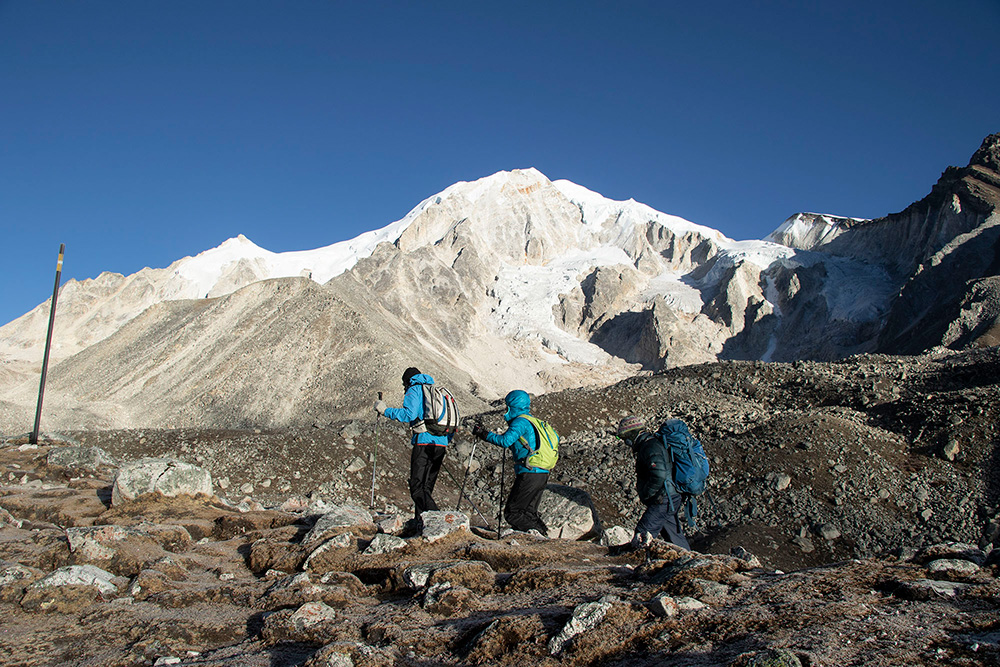
Learn more about the Manaslu Region here
The Valley and Its People
The Tsum Valley is settled against the majestic backdrop of the Ganesh (7,422m / 24,350ft) and Shringi (7,155m / 23,474ft) Himal. The locals are said to be mitigated from Tibet and have a unique way of life.
Even these days, some families practice polyandry (or having more than one husband at a time).
People of this valley have strong faith in Buddhism. They pray to Buddha, Guru Rinpoche (Padmasambhava), and some bodhisattvas. They install prayer flags, kata, or Mani walls, burn butter lamps in monasteries, and believe in the reincarnation of lamas.
It is believed that the famous Buddhist saint ‘Milarewa’ is to be mediated in the caves of the mountains of the Tsum Valley.
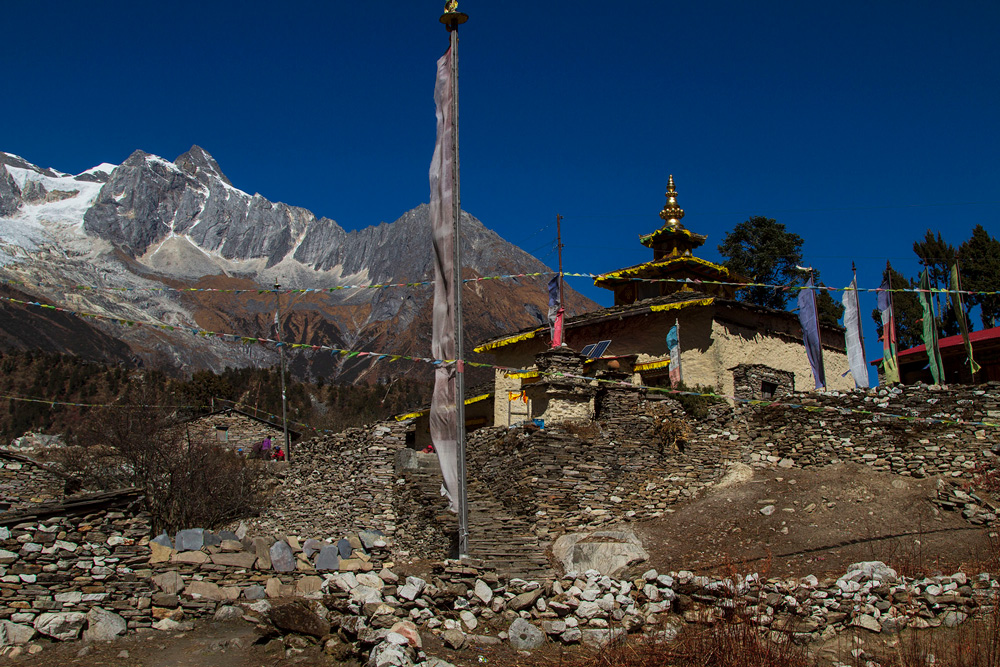
The Tsum Valley Trek boasts some unique and historic monasteries like Rachen, Lungdang, and Mu Gompa. These monasteries (Rachen and Mu) lie on the plateau in the lap of the valley. The Lungdang is situated on the base of the conical hill against the main slope of the Ganesh Himal.
The people here celebrate Loshar, Dhachyang (the horse festivals), Saka Dawa, and Faning.
Loshar is celebrated as a Tibetan New Year according to the Tibetan lunar calendar. Dhachyang is organized by the welfare committee in December/January. Similarly, Saka Dawa is celebrated as the birthday of Lord Buddha. The Faning is celebrated in August to mark the attainment of internal energy.
Click here to book The Manaslu Circuit Trek
Flora and Fauna of the Tsum Valley
Due to its topography and varied climate, the valley is rich in biodiversity.
The Tsum Valley is home to a variety of wildlife, including species such as the blue sheep (Pseudois Nayaur) and the Himalayan tahr (Hemitragus Jemlahicus). Predators like the snow leopard (Panthera Uncia) play a vital role in controlling herbivore populations, preventing overgrazing, and preserving forests.
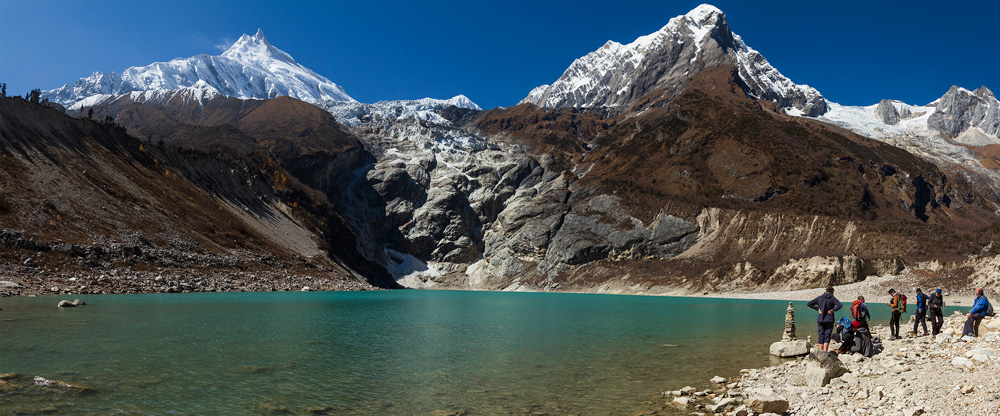
Over 110 species of birds have remarked this area. Among these are the Himalayan griffon (Gyps Himalayensis) and the golden eagle (Aquila Chrysaetos), which are endangered species.
You will explore rhododendrons, juniper, and pine forests during the Tsum Valley Trek.
Click here to book Short Manaslu Circuit Trek
The detailed Itinerary to explore the Hidden Valley
Let me suggest you the best itinerary where you can explore Tsum Valley, the way it is. In this itinerary, you need to add an acclimatization day to prevent yourself from altitude sickness.
DAY 1: Arrive in Kathmandu (1,400m / 4,600ft)
On arrival at Tribhuvan International Airport, the representative will pick you up and drive you to the hotel. After the long flight, you can simply relax and make yourself comfortable in the Nepali community.
DAY 2: Sightseeing in Kathmandu and trip preparation
On the second day, you can explore the Kathmandu Valley. For this day you can choose the UNESCO World Heritage Sites.
1. Kathmandu / Patan/ Bhaktapur Durbar Square
2. Pashupatinath temple
3. Bouddhanath
4. Syambhunath (the monkey temple)
The tour of Kathmandu will give you an idea of its culture, tradition, and way of life.
In the evening you can explore the Thamel Bazar or enjoy Nepal’s nightlife.
DAY 3: Drive to Machha Khola (890m / 2,920ft) from Kathmandu
On the second day, drive to Machha Khola. The drive will cover about 177 KM and the drive will be for 7-8 hours. You will cross Arughat and Seti Khola to reach your day destination.
The drive to Soti Khola via Arughat will be very scenic and comfortable. After that, the off-road will start and continue up to Machha Khola. You can spend your overnight at Machha Khola.
DAY 4: Trek to Jagat (1,340m / 4,396ft) from Machha Khola
The trekking distance for the fourth day will cover about 22 KM and is about 6 hours of walking distance.
You will walk up and down along the side of the BudhiGandkai river. You will cross Khorlabesi, Tatopani, Tharo Bharyang, Dobhan, and finally Jagat. These villages are Gurung Settlements. You can simply relax and take a natural hot bath at Tatopani.
You will see the waterfalls coming down from the top of the mountains and lush green forests during your walk.
DAY 5: Hike to Lokpa (2,240m / 7,349ft) from Jagat
The hike for this day will gain an elevation of 900m from Jagat. You will walk for 6 hours and cover about 18 KM of distance. Lokpa is the entry gate of Tsum Valley.
Before reaching your day destination you have to cross Salleri, where you will see the clear views of the mount Sringi. After that, you will descend to Sirdbas, and crossing a suspension bridge you will reach Philim.
Take a short break at Philim and start your hike to Ekle Bhatti where the junction of two rivers splits the route left for the Manaslu Circuit, and right towards Tsum Valley.
Following the route, takes you to Lokpa. From Lokpa you will see the clear views of Ganesh Himal and Manaslu ranges.
DAY 6: Hike to Chhokang Paro (3,031m / 9,944ft) from Lokpa
This day will be the hardest day to hike. You will gain 791m elevation. The trek distance is about 26 KM and takes about 8 hours to be at your day destination.
Your hike up to Chumling will be very easy but from there you will hike in the landslide zone. From here you get an amazing view of the Boudha Himal.
You can also visit the famous monasteries of the Chumling village (Panago, Mani Dhungyur, Gurwa).
Crossing the Shair River you get to Domje and finally to Chhokang Paro. Here you get the warm hospitality of the Tibetan people.
DAY 7: Hike to Nile (3,361m / 11,026ft) from Chhokang Paro
Your hike to Nile will cover 9 Km and 5 hours of walking distance. Also, you will gain an elevation of 330m.
Hiking from Chhokang Paro first you will reach Chhule village. Enroute you will pass the Phiren Phu Cave. It is also called Pigeon Cave where it is believed that Tibetan saint Milarepa meditated in this cave. Also, his footprints are imprinted there.
From there you will cross a suspension bridge over the Shair River and reach the Nile.
DAY 8: Hike to Mu Gompa (3,700m / 12,139ft) from Nile
The hike for this day will be up to Mu Gompa which will take 4 hours and covers 8 KM of walking distance.
Walking for 2 hours first you will reach Dephyudonma Gumba, one of the oldest monasteries in the region, signifying the dawn of the Buddist religion in this valley.
After that following the trail, you get to Mu Gompa. It is the largest and oldest monastery in this region. It was built in 1895 AD and is near the Tibet border.
DAY 9: Hike to Rachen Gompa (3,240m / 10,629ft) from Mu Gompa
Walking from Mu Gompa to Rachen Gompa will cover about 18 KM and take about 5 hours of walking distance.
You will return from Chuile and the walk continues along the trail to Phurba. From there at the diversion take a route to the east at Siyar river and hike to Rachen Gompa.
Rachen Gompa, a nunnery was built in 1905 AD. This includes its history of Buddhism and several murals.
DAY 10: Hike to Gumba Lungdang (3,200m / 10,498ft)
A simple and easy hike to another historic monastery Lungdang. It will cover about 18 KM and take 5 hours of walking distance.
Hiking from Rachen leads to Chhakang Pro and then leads to Chumling. After a few hours of trek, you will reach Gho Gompa. From there you will descend to Domje. It is a Tibetan herbal clinic and school.
Following the trail after hours of hike, you will reach a day destination.
Gumba Lungdang is the home to 40 nuns. There you can see the intense rituals and enjoy the stunning views of Ganesh Himal.
DAY 11: Descend to Lokpa from Gumba Lungdang
You will head back to Lokpa. Following the trail, you first reach Domje. After that heading south and crossing the suspension bridge you get to Ripche.
From there descend to Batti Ghumlong and then finally to Lokpa. You will walk around 7 hours and cover about 24 KM.
DAY 12: Descend back to Jagat
From Lokpa you will again join the trail on the bank of BudhiGandkai River. Crossing the Sirdibas village you get back to Lokpa.
DAY 13: Descend back to Machha Khola
You will descend back to the same trail to Machha Khola. Hiking for 6 hours and covering a distance of 22 KM and get back to Machha Khola.
DAY 14: Drive back to Kathmandu
On the 14th day, you will drive the same strenuous road. Travelling for 8 hours which will cover about 177 Km. Get to the hotel and relax for the rest of the day.
DAY 15: Departure
On the final day, the representative will bid you a warm farewell. Fly back to your country.
This is a complete itinerary for the Tsum Valley Trek. You can also add an extra day and make a side trip to Ganesh Himal Base Camp.
Learn about Manaslu Circuit Trek here
Best Time to consider for the Tsum Valley Trek
The best time to explore Nepal is in Spring and Autumn. The spring lasts from March to May and Autumn lasts from September to November.
These are the ideal seasons where you can explore the best of the vistas. During this time the weather is cool, with open skies and clear views of the entire region.
When embarking on the Tsum Valley Trek it is important to consider the advantages and disadvantages of each season.
Spring Season: The months of March to May are ideal for Tsum Valley Hike. During this time, the weather is pleasant and sunny, and the Rhododendron, Nepal's national flower, blooms, creating a stunning landscape.
Autumn season: Autumn is the best for the Tsum Valley Walk. During this season you will get a clear view of the region. It is also the best time to explore local culture and tradition. The trail gets busy during this time with the number of trekkers.
Winter Season: The Tsum Valley Trek during the winter season is a great option for those who want to experience the frozen beauty of this region.
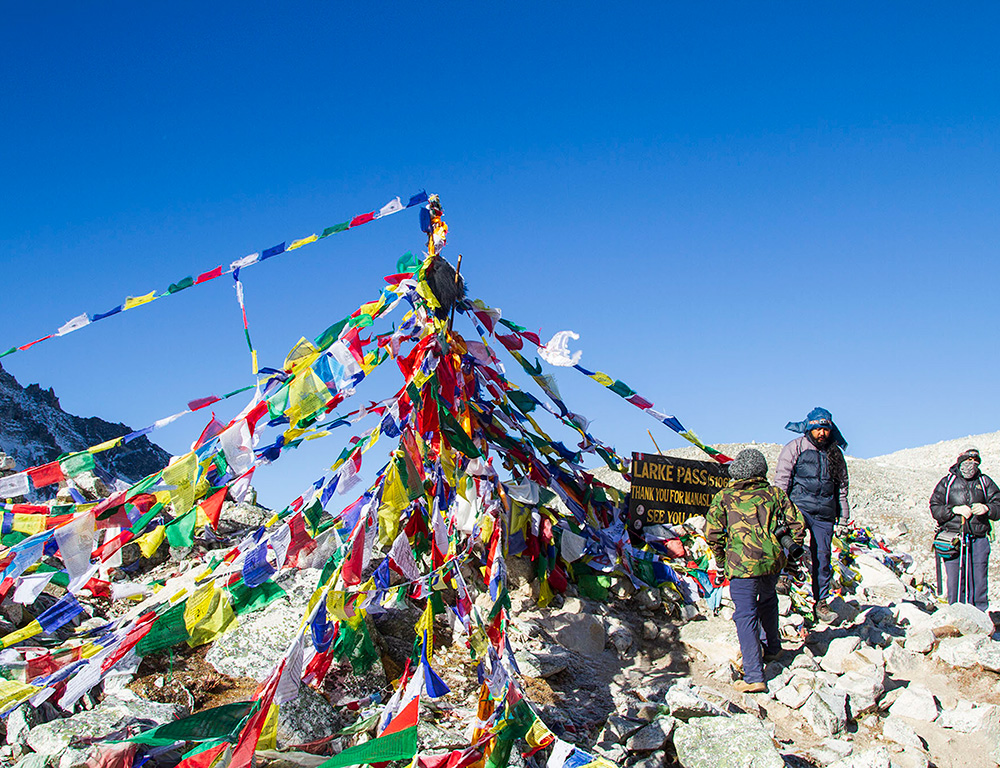
The waterfalls get frozen. The area receives the maximum snowfall and results in fewer views and cold experiences.
In winter trek can be challenging due to freezing temperatures and snow-covered trails, and there may be limited services and accommodations.
Summer Season: There are few trekkers during this season, making it even more pristine. During the summer, the Tsum Valley hike becomes relatively challenging due to constant rainfall, which can cause landslides and trail blockages.
So, add a few extra days and avoid traveling on tight schedules during the summer season.
Learn more about Best Season to Trek Manaslu Circuit
Tsum Valley Treks Permits
If we talk about permits for Tsum Valley. There are two types of permits you need to obtain i.e.
- Restricted Area Permit (RAP)
- Manaslu Conservation Area Permit (MCAP)
The costs for the MCAP are fixed. One depending upon the nationality you need to pay the price.
For SAARC national tourists: $10 (NPR 1,000) per person
For other national tourists: $30 (NPR 3,000) per person
However, the price for the RAP depends upon the season and the nationality.
From December to August: USD 30 per person/week, USD 7 per person/day (beyond 1 week)
From September to November: USD 40 per person/week, USD 7 per person/day (beyond 1 week)
You can easily obtain the permits for Tsum Valley Trek from the Nepal Tourism Board (NTB), Kathmandu Nepal. For the Restricted Area Permit, you need to be assigned to a trekking company based in Nepal.
Learn more about Why Is Manaslu Circuit Restricted Area?
Uniqueness and Difficulty Level for Tsum Valley Hike
Beyond the amazing scenery typical of Himalayan treks, the Tsum Valley Trek offers a unique combination of cultural immersion and a chance to explore a relatively untouched corner of Nepal.
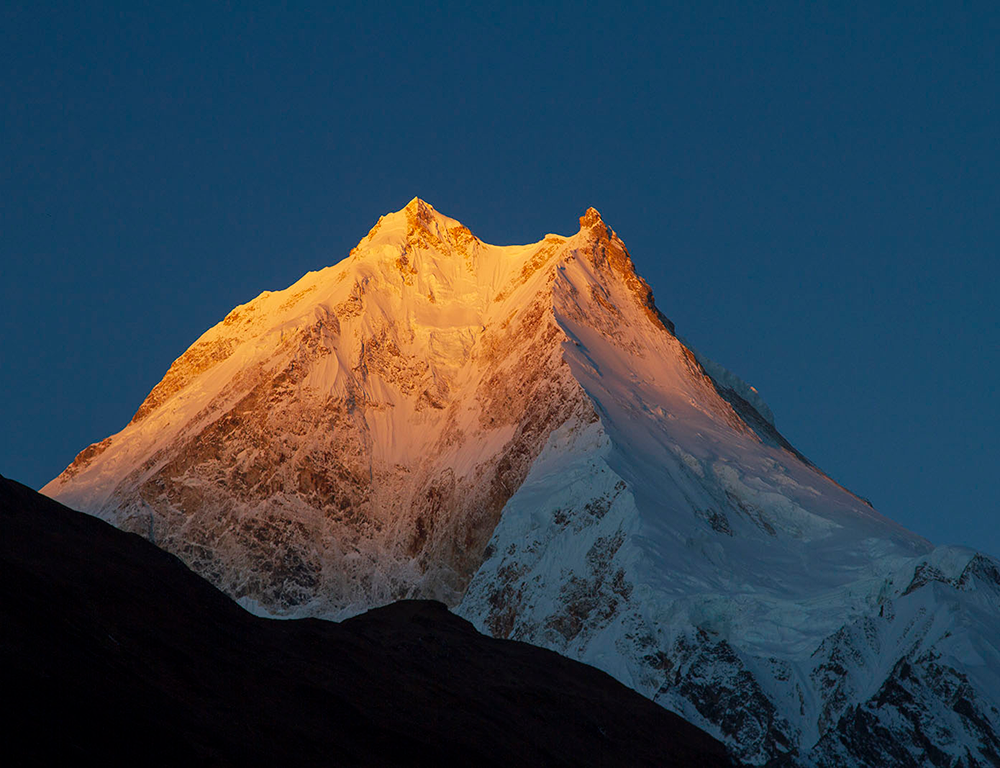
A few things to be considered for this trek:
- Living Tibetan Culture
- Phiren Phu Cave
- Mu and Rachen Monasteries
- Unique Landscapes
- Potential Wildlife encounters
If we talk about the difficulty level The Tsum Valley Hike in the Manaslu region is reasonably easy, although the landscape is remote and rough, with steep ascents and descents on rocky routes.
Trekking takes place at high altitudes, and acclimatization is critical to avoiding altitude sickness.
.webp)




